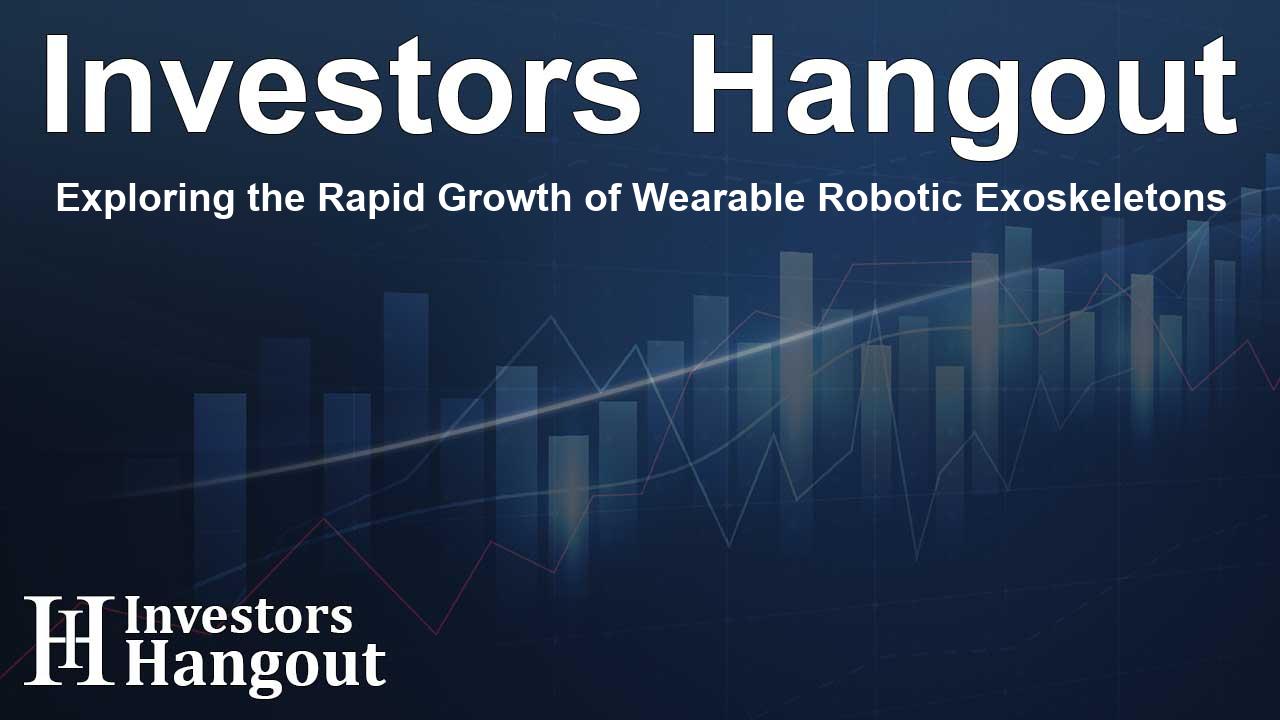Exploring the Rapid Growth of Wearable Robotic Exoskeletons

The Rise of Wearable Robotic Exoskeletons
Wearable robotic exoskeletons represent a fascinating intersection of technology and human enhancement. These innovative devices are designed to boost human strength, agility, and endurance by imitating natural body movements. Their application spans across diverse sectors such as healthcare, manufacturing, and even military, showcasing significant benefits and improvements in productivity.
Transforming Healthcare with Exoskeletons
In the healthcare industry, robotic exoskeletons are making waves in rehabilitation processes. Devices such as the ReWalk system are allowing individuals with mobility impairments, particularly those with spinal injuries, to regain the ability to walk and move independently. Hospitals are increasingly adopting these technologies to not just speed up recovery but also to enhance the overall quality of life for patients.
Robust Rehabilitation Solutions
Robotics in rehabilitation goes beyond the ReWalk system. For example, the EksoGT by Ekso Bionics is gaining traction in medical facilities, providing invaluable assistance to patients recovering from strokes and other mobility-affecting conditions. By integrating these advanced solutions into their practice, healthcare professionals can tailor therapies that significantly utilize robotic support.
Exoskeletons in Industrial Applications
In industrial settings, wearable exoskeletons are increasingly crucial for maintaining worker safety and efficiency. Instances of work-related injuries have notably decreased due to the support these devices provide during physically demanding tasks. For example, Ford employs the EksoVest to help reduce the strain workers experience from repetitive overhead tasks, which not only boosts morale but also enhances overall productivity.
Military Enhancements
The military sector is adopting exoskeleton technology to enhance soldier performance. The ONYX exoskeleton, developed by Lockheed Martin, assists soldiers by enhancing their strength and stamina, enabling them to carry heavier loads over long distances. Such advancements not only improve operational effectiveness but also significantly reduce the likelihood of injuries during missions.
Revolutionizing Construction Practices
The construction industry is embracing robotic exoskeletons to help workers lift cumbersome materials safely. Sarcos Robotics’ Guardian XO is a standout example, enabling workers to effortlessly lift heavy items, thus mitigating the risk of strain and injury. As companies start to realize the benefits of these technologies, we can anticipate a rapid rise in their adoption.
Global Reach and Market Growth
The global market for wearable robotic exoskeletons is projected to expand significantly, driven by their various applications and their potential to improve human capabilities across multiple sectors. As countries invest in research and development, we can expect innovations that will further enhance the functionality and effectiveness of these devices.
Leading Countries in Exoskeleton Innovations
Countries like the United States, Japan, and Germany are at the forefront of this technological wave. The U.S. has made remarkable strides with companies like Ekso Bionics and ReWalk Robotics, while Japan’s innovations include Honda's Walking Assist, further emphasizing their commitment to enhancing the quality of life through technology.
Top Market Participants and Their Innovations
Some of the prominent companies shaping the landscape of the wearable robotic exoskeleton market include Bionik Laboratories Corp., Ekso Bionics, and ReWalk Robotics. Each organization is tirelessly working towards advancements that improve user experience and effectiveness of exoskeleton technologies.
Frequently Asked Questions
What are wearable robotic exoskeletons?
Wearable robotic exoskeletons are advanced devices designed to enhance human strength and mobility by mimicking natural movements.
How are exoskeletons used in healthcare?
In healthcare, exoskeletons assist with rehabilitation, helping individuals regain movement, especially following injuries like spinal cord damage.
What benefits do exoskeletons provide in industrial settings?
Exoskeletons reduce worker fatigue and injuries by providing support during tasks that require lifting or repetitive movements.
Which countries lead in exoskeleton technology?
The United States, Japan, and Germany are leading in exoskeleton innovations, with many leading companies based in these nations.
What is the future outlook for the exoskeleton market?
The market for wearable robotic exoskeletons is expected to grow rapidly, driven by technological advancements and increasing applications across various industries.
About Investors Hangout
Investors Hangout is a leading online stock forum for financial discussion and learning, offering a wide range of free tools and resources. It draws in traders of all levels, who exchange market knowledge, investigate trading tactics, and keep an eye on industry developments in real time. Featuring financial articles, stock message boards, quotes, charts, company profiles, and live news updates. Through cooperative learning and a wealth of informational resources, it helps users from novices creating their first portfolios to experts honing their techniques. Join Investors Hangout today: https://investorshangout.com/
Disclaimer: The content of this article is solely for general informational purposes only; it does not represent legal, financial, or investment advice. Investors Hangout does not offer financial advice; the author is not a licensed financial advisor. Consult a qualified advisor before making any financial or investment decisions based on this article. The author's interpretation of publicly available data shapes the opinions presented here; as a result, they should not be taken as advice to purchase, sell, or hold any securities mentioned or any other investments. The author does not guarantee the accuracy, completeness, or timeliness of any material, providing it "as is." Information and market conditions may change; past performance is not indicative of future outcomes. If any of the material offered here is inaccurate, please contact us for corrections.